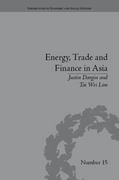Question
What are the primary causes of hyperinflations? Explain. 2. First, explain what seignorage is. Second, write out and explain the expression that represents seignorage. And
What are the primary causes of hyperinflations? Explain.
2. First, explain what seignorage is. Second, write out and explain the expression that represents seignorage. And finally, what policies can a central bank implement to increase seignorage?
3. Explain what the inflation tax is and write out the expression that represents it. Also, under what conditions, if any, will seignorage and the inflation tax be equal? Explain.
4. What are the determinants of real money balances?
5. Using the information in this chapter, label each of the following statement true, false, or uncertain. Explain briefly.a. When nominal money growth is constant, inflation must eventually be equal to original money growth so that the inflation tax is equal to seignorage.b. Most of the time, in most countries, deficits are financed primarily through borrowing rather than money creation.c. The larger the real money balance held in the economy, the smaller the amount of seignorage corresponding to a given rate of nominal money growth.d. Increase in expected inflation lead people to decrease their use of money and to decrease their real money balances.e. Because inflation is generally good for those who borrow money, hyperinflations are the best times to take out large loans.f. The solution to ending a hyperinflation is to institute a wage and price freeze.6. Assume that money demand takes the form
where Y = 1,000 and r = 0.1.
a. Assume that, in the short run, is constant and equal to 25%. Calculate the amount of seignorage for each rate of money growth, M/M, listed below.i. 25%ii. 50%iii. 75%b. In the medium run, M/M. Compute the amount of seignorage associated with the three rates of money growth in part (a). Explain why the answers differ from those in part (a)7. How would each of the policies listed in parts (a) through (b) change the Tanzi-Olivera effect?a. Requiring monthly instead of yearly income tax payments by households.b. Assessing greater penalties for under-withholding of taxes from monthly paychecks.c. Decreasing the income tax and increasing the sales tax.
8. You are the economic adviser to a country experiencing a hyperination. Politicians debating the proper course of stabilization have advocated various positions, listed instatements (a) through (e). Discuss each statement in turn.a. 'This crisis will not end until workers begin to pay theirfair share of taxes.'b. 'The central bank has demonstrated that it cannotresponsibly wield its power to create money, so we haveno choice but to adopt a currency board.'c. 'Price controls are necessary to end this madness.'d. 'Stabilization will be successful only if there is a largerecession and if there is a substantial increase inunemployment.'e. Let's not blame the central bank. The problem is scalpolicy, not monetary policy.'
9. What is the rate of money growth that maximizes seignoragein the economy described in problem 6(b)? (Hint: you learned in problem 6(b) that seignorage, in the medium run, is greater at money growth of 50% than at money growth of 25% or 75%. Start by calculating seignorage for money growth rates near 50%. Increase and then decrease money growth rates by one percentage point until you find the answer.)
Step by Step Solution
There are 3 Steps involved in it
Step: 1

Get Instant Access to Expert-Tailored Solutions
See step-by-step solutions with expert insights and AI powered tools for academic success
Step: 2

Step: 3

Ace Your Homework with AI
Get the answers you need in no time with our AI-driven, step-by-step assistance
Get Started


